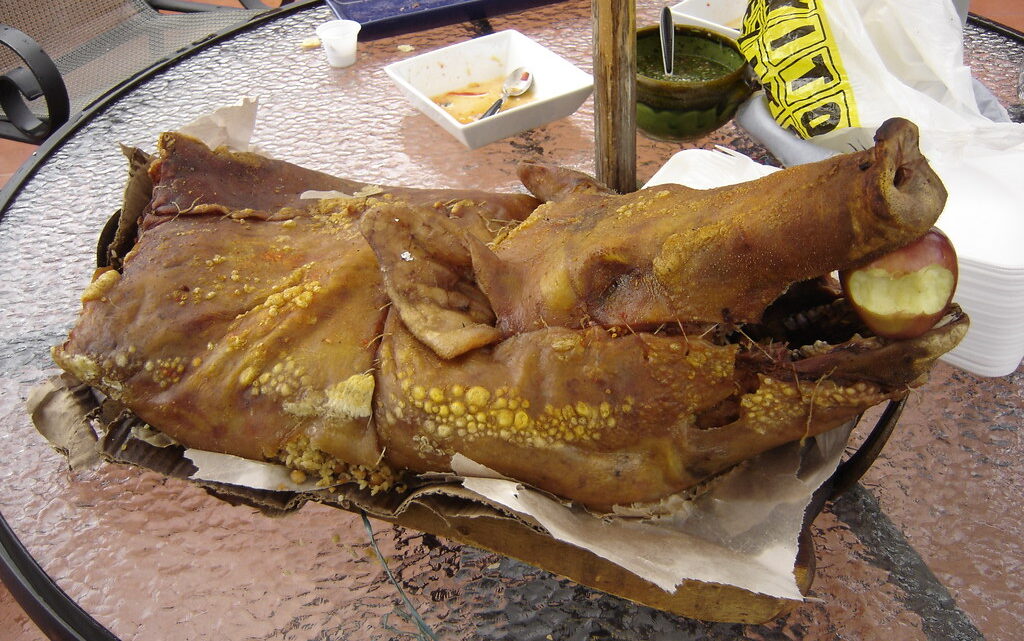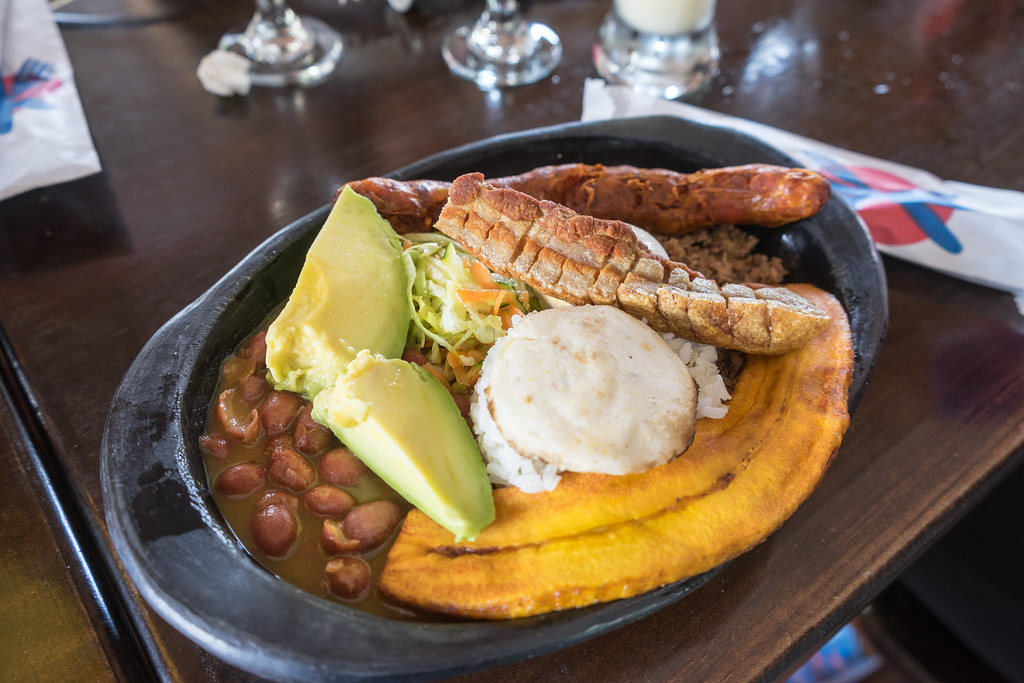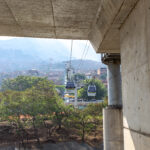
Colombian Food: 52 Traditional Dishes to try in Colombia
February 22, 2024Colombian cuisine often receives criticism for being too bland, greasy, or sweet. That might be true in some parts; however, I enjoy it a lot. The food is diverse, with each region of the country having its unique dishes. This fantastic cuisine is ch–aracterized by dishes that have been passed down from generation to generation, influenced by not only indigenous Colombian culture but also Spanish, African, and Arab cultures. Colombian food is versatile, rich, and full of flavor, featuring a wide variety of colorful and comforting dishes. This guide highlights 52 traditional Colombian dishes, including some of my personal favorites.

Table of Contents
What Makes Colombian Food Unique?
Colombia is renowned for being the second most biodiverse country in the world. In fact, per square kilometer, it is the most biodiverse. This biodiversity is reflected in its cuisine, which varies significantly by region. Colombian dishes are carefully crafted using fresh local ingredients, including tropical fruits, seafood, meats, grains, and legumes. Key ingredients such as arepas (corn cakes), plantains, avocados, and coconuts, as well as more exotic ingredients like guinea pig, ants, and fruits you may have never heard of, along with traditional techniques such as slow cooking and grilling, play significant roles in Colombian cuisine.
Colombian Empanadas
Latin America is home to a variety of empanadas, with each country having their version of it. While the Argentinean empanadas are well-known for their baked version, they are often criticized for being too dry. There are various types of shells and fillings used for empanadas in different Latin American countries. I find the Colombian deep-fried empanadas, which have a crispy and flaky dough and meaty filling, to be the most delicious. The fillings for empanadas vary from potatoes, rice, different types of meats, and more. One of my favorite snacks are the little empanadas de iglesia served with a side of ají, which is a spicy sauce.
Bandeja Paisa
If you ever visit Medellin, you cannot miss out on the emblematic Bandeja Paisa dish. Initially created to provide sustenance to farmers during long hours of work, it now represents Paisa culture. A traditional Bandeja Paisa is known for its generous amount and variety of food: red beans cooked with pork, white rice, ground meat (carne molida), chicharrón, fried egg, plantain (plátano maduro), chorizo, arepa, hogao sauce, black pudding (morcilla), avocado, and lemon.
If you do not enjoy the ground beef because it is too dry, you can mix it with the beans or ask for some aji picante, which will enhance your experience.
Arepas
Arepas are a staple food in Colombia, and they are served in all regions, but they are prevalent in Medellin and surrounding areas. There is even a saying related to it: “mas paisa que la arepa,” meaning someone is genuinely from Medellin. Arepas are corn cakes made of corn dough or precooked corn flour in a flat circular shape, like a pancake. They can be cooked on a grill, fried, or roasted. There are over 40 types of arepas in Colombia. Still, the most popular ones are Arepa e’ huevo (with eggs, and sometimes with meat), Arepa de choclo (sweet, made with choclo corn and served with cheese), Arepa Boyacense (very sweet, often filled with cheese), Arepa Paisa (simple but a bit bland), and Arepa de Santander (made with peeled corn and pork fat). For me, the best arepa is a simple and crunchy Arepa de Yuca.
Cazuela de Mariscos
Cazuela de Mariscos is a seafood stew that captures the essence of Colombia’s Caribbean coast. This rich and creamy dish is made with various seafood, such as shrimp, fish, clams, and squid, simmered in a coconut milk-based broth with tomatoes, onions, garlic, and bell peppers.
The result is a flavorful and comforting bowl of goodness, often served with white rice and lime wedges to enhance its flavors.
Arroz con Coco
Arroz con Coco, also known as Coconut Rice, is a popular side dish that reflects the Afro-Colombian culture of the country’s Caribbean coast. It is cooked in coconut milk, which gives it a creamy texture and a distinct flavor that goes well with meat and seafood dishes. The secret to its unique taste is the caramelization of the coconut milk, which adds depth and sweetness to the rice.
Mondongo
Mondongo is a hearty and nourishing soup made with diced tripe (cow’s stomach). This dish is slowly simmered with potatoes, cassava, carrots, and a mix of herbs and spices, resulting in a rich and flavorful broth. While tripe is not for everyone, Sopa de Mondongo is a beloved dish across Colombia, often enjoyed as a remedy for hangovers or a comforting meal on rainy days. El Poblado and Laureles have two restaurants named Mondongo that specialize in this dish.
Pandebono
Pandebono is a cheese bread that is as addictive as it is simple. This gluten-free delicacy is made with a dough made of cassava starch, cornmeal, and a generous amount of cheese. The result is a soft, chewy texture and a savory taste that’s hard to resist. Pandebono is best served warmly as a breakfast item or afternoon snack.
Whether paired with coffee or enjoyed alone, pandebono is a true icon of Colombian comfort food.
Lechona
Lechona is a traditional Colombian dish that is both festive and labor-intensive. The name “Lechona” translates to “suckling pig” in English, but it differs from the standard pig on a spit you might have tasted at barbecues. Although it is believed to have originated from the Tolima region, it can now be found all over Colombia.
This dish involves stuffing a whole pig with rice, peas, and spices and then slow roasting it for several hours until the skin is crispy and the meat is tender and flavorful. Preparing and cooking Lechona can take 10 hours, not including the prep work.
Ajiaco
Ajiaco is a classic chicken soup that brings comfort to those in Bogotá. This hearty dish is prepared using different types of potatoes, chicken, corn on the cob, and the guascas herb, which provides it with a unique flavor. The soup is accompanied by a dollop of cream, capers, and avocado served on the side, making it the perfect meal to warm you up on a cold and rainy day in Bogotá—that, and maybe a canelazo.
Cazuela de frijoles
Cazuela de Frijoles, also known as Cazuela Antioqueña, is a delicious and hearty bean casserole. This dish is like Bandeja Paisa in its ingredients, as it combines red beans cooked with pork, plantains, and a variety of spices, all baked together in a clay pot. The result is a rich and comforting casserole full of flavor. It is usually served with rice, avocado, and arepas on the side.
Sudado de Pollo
Sudado de Pollo is a traditional Colombian chicken stew known for its tender, fall-off-the-bone meat and flavorful broth. Cooked with tomatoes, onions, potatoes, and herbs, this dish is a staple in Colombian homes and restaurants.
Caldo de Costilla
Caldo de Costilla is a savory beef rib soup that is commonly eaten for breakfast in Colombia, especially after a night of celebration. This hearty soup is known for its revitalizing and energizing properties.
To make this nourishing broth, beef ribs are simmered with potatoes, garlic, onions, and cilantro, resulting in a flavorful and restorative soup that’s perfect for starting the day.
Tamal Tolimense
It is believed that there are around 500 variations of tamales. At least 12 different regions in Colombia have their unique way of preparing this dish, including Bogota, Tolima, Nariño, Santander, Cauca, the coast (where they are called pasteles), and the Paisa region (Antioquia and Caldas region), among others.
The most popular version of these tamales is the Tamal Tolimense. It is made using a mixture of corn dough, pork, chicken, beef, vegetables, and spices. This delicious dish is usually wrapped in banana leaves and is typically eaten during special occasions and holidays.
Patacones
Fried plantain, or “patacones” in Colombia, is a ubiquitous side dish enjoyed nationwide. Made from green plantains sliced, fried, flattened, and fried until crispy, patacones are a perfect combination of crunchy texture and mild flavor. Served with a side of hogao sauce or guacamole or as a base for toppings like shredded beef, cheese, or avocado, fried plantains are a versatile and delicious staple of Colombian cuisine.
If I could only eat one Colombian dish for the rest of my life, it would be patacones.
Calentado
Calentado is a popular Colombian breakfast from the Andean region. Its name translates to “heated” in English, and it is traditionally made using leftovers from the previous day’s meal. To prepare calentado, rice and beans are combined with chorizo and egg, and the dish is served with avocado and arepas.
Chorizo
Chorizo is a popular type of sausage that is commonly consumed in Latin countries. Like almost all sausages, chorizo is delicious and flavorful. Colombian chorizo, in particular, is a tasty sausage that is widely used in various dishes or can be enjoyed as a snack. Made with a combination of pork, garlic, and a blend of spices, Colombian chorizo is usually grilled or fried and served with arepas and lime wedges. Most Colombians believe that the best chorizo comes from Santa Rosa de Cabal in the Eje Cafetero region. To enjoy it like a local, add a dash of lime juice.
Chicharron Colombiano
If you have previously visited Mexico and didn’t enjoy their chicharrones, you should try the Colombian version as they are very different and much better. Colombian Chicharron is a pork belly dish with crispy skin and tender meat that is a staple of Colombian cuisine. It can be served on traditional platters such as Bandeja Paisa or as a snack with arepas and lime. The secret to its irresistible texture is the slow cooking of the pork belly before frying to achieve the perfect crunch.
Next to patacones, this dish is my absolute favorite.
Ceviche de Camarones
Ceviche de Camarones is a delightful dish that showcases Colombia’s coastal cuisine. This particular version of ceviche is made with shrimp marinated in lime juice, onions, cilantro, and tomatoes, resulting in a vibrant and flavorful appetizer. Sometimes, mayonnaise is added to the dish for some extra flavor. This dish is served cold and is perfect for hot days, offering a healthy and delicious taste of the sea.
Carne a la Llanera
Carne a la Llanera, also known as “mamona,” is a traditional way of preparing beef in Colombia’s Eastern Plains, which is also called Llanos. This method involves slow-roasting significant cuts of meat over an open fire, which imparts a smoky flavor and tender texture to the meat. This rustic and flavorful dish is usually served with yuca, plantain, potatoes, and some sauces. Carne a la Llanera has its roots in the cowboy culture of the Llanos region.
Fritanga
If you’re feeling adventurous and craving meat, fritanga is the perfect dish. It is a huge plate filled with different types of grilled and fried meats, including offal, that is best shared with friends. It’s a genuinely authentic Colombian experience and pairs well with an ice-cold local beer. Although it may not sound appetizing to everyone, fritanga is an excellent way to taste different kinds of meat that you wouldn’t usually eat. The dish is best enjoyed with toothpicks to pick up the juicy bits and pieces.
Trucha
Trucha, which is also called trout, is a famous dish in the Andean regions of Colombia, where fresh trout is readily available. The trout is commonly pan-fried or grilled and served with garlic or almond sauce, along with sides such as potatoes and vegetables. In Medellin and its surrounding areas, there are many trucherias where you can catch your trout and have it prepared for you.
Lomo al Trapo
Lomo al Trapo is a traditional dish that involves wrapping a whole piece of beef tenderloin in a cloth. The cloth is usually soaked in saltwater and then encrusted in a thick layer of salt. The wrapped meat is tightly bound with string and cooked directly in the embers of an open fire. The salt crust protects the meat, sealing in flavors and juices. After cooking, the cloth and salt crust are removed, revealing a tender, succulent, and incredibly flavorful roast.
Aguapanela
Aguapanela is a traditional Colombian drink made by dissolving unrefined cane sugar, called panela, in water. It can be enjoyed either hot or cold, making it a versatile drink suitable for all seasons. It is often flavored with lime or lemon juice, which makes it a refreshing thirst-quencher during hot days or a warming drink for colder weather.
In Colombian culture, Aguapanela is believed to have medicinal properties due to its soothing and hydrating effects, and it is often used as a home remedy for colds and flu. It is also commonly served with various Colombian snacks and meals, particularly cheese. Some people even melt the cheese into the hot version of the drink for a savory twist.
Cocido Boyacense
Cocido Boyacense is a famous and hearty stew that originates from the Boyacá region. Traditionally, it is served in stages, starting with the broth, followed by the meat and vegetables that are arranged on a large platter. This complex dish is made with a variety of meats, including pork, beef, and chicken, along with a range of local vegetables such as potatoes, cassava, corn, and peas. The stew is seasoned with a blend of herbs and spices to enhance its flavor and aroma. It is an ideal comfort food that is perfect for chilly days or when you crave a warm, filling meal.
Ensalada de Frutas
Ensalada de Frutas, also known as fruit salad, is a popular and refreshing dish commonly found in Colombia. This delicious and simple dish usually consists of a mix of freshly chopped mango, papaya, pineapple, bananas, berries, and other fruits tossed together. It can be enjoyed either on its own or with a sprinkle of salt or sugar and a dash of lime juice to enhance the natural flavors of the fruits. Oh yeah, and cheese. Moreover, the dish is often served as a dessert or snack and is frequently sold by street vendors.
Natilla and Hojuelas
Natilla is a traditional dessert from Colombia that is particularly popular during the Christmas season. It is a creamy and custard-like treat that is a central part of holiday celebrations. To make Natilla, you’ll need milk, panela (unrefined cane sugar), cornstarch, cinnamon, and sometimes cloves. It is served chilled and often garnished with coconut or cheese.
In addition to Natilla, Hojuelas are a popular Christmas treat. These thin, crispy fried pastries are dusted with sugar and cinnamon. When served alongside Natilla, they offer a delightful contrast in textures.
Chicha
Chicha is a traditional fermented beverage with roots in the indigenous peoples of the Americas. It is made from cooked and fermented maize (corn) and can be flavored with fruits or spices. The taste, strength, and preparation methods of Chicha vary widely across different regions of Colombia. Depending on the recipe, it can be mild and slightly sweet with a sour taste or stronger and more potent.
Bizcochos de Achira
Galletas de Achira are traditional Colombian cookies from the Huila region, renowned for their unique texture and flavor. These cookies are made from achira flour, which comes from the achira plant or Indian Shot, a type of canna native to the Andes. The flour is mixed with cheese, butter, and eggs to create a dough that is then shaped into small cookies and baked until crispy. Galletas de Achira are distinctive due to their crispy texture and subtle cheese taste, making them a delightful treat to enjoy with coffee or hot chocolate.
Sancocho
Sancocho is a traditional stew from Colombia that varies in its ingredients depending on the region but always provides comfort and warmth. Sancocho de gallina, a chicken-based version of the dish, can be found all over the country and is a staple of farms and fincas where families and social gatherings often involve slaughtering a chicken and cooking it up. During holidays, Colombians can be seen preparing Sancocho on a makeshift fireplace in front of their homes or the side of a stream.
This hearty stew is typically made with chicken, fish, or three types of meat (Sancocho Trifasico), along with large pieces of plantain, potato, yuca, and corn, all simmered in a flavorful broth.
Arroz con Pollo
Arroz con pollo, which means “rice with chicken,” is a popular and traditional dish in Latin America. It consists of chicken cooked with rice, onions, saffron, and other grains or vegetables. Arroz con Pollo is a staple of Colombian home cooking. It is usually prepared for and eaten at parties and special events such as quinceañeras (sweet fifteen parties), graduation luncheons, birthdays, and even Christmas events.
It is also expected to be found in low-cost fast-food restaurants, where a family-sized portion can be bought for a few dollars.
Changua
Changua is a popular breakfast soup originating from the Andean region, specifically Bogotá. However, it is enjoyed throughout the country as a cure for hangovers, even by children. This simple yet nourishing soup is made with milk, water, scallions, and eggs and is typically served with bread on the side for dipping.
Picada
Picada is a Colombian dish designed for sharing and featuring a variety of fried ingredients. The name picada means “chopped” in Spanish, and this communal platter typically includes a mix of meats such as chorizo, chicharron, and beef, as well as fried plantains, potatoes, yuca, and arepas. Picada is a social dish that is often served at gatherings and celebrations.
Sobrebarriga
Sobrebarriga is a traditional dish from Colombia, which is made by slow-cooking flank steak until it becomes tender in a sauce made with tomatoes, onions, garlic, and cumin. This dish is usually accompanied by potatoes and yuca, which make it a wholesome and fulfilling meal.
Salchipapas
Salchipapas is a well-known street food dish in Colombia that consists of two simple ingredients: sausages (salchichas) and fries (papas). This quick and easy snack is often served with a variety of sauces, such as ketchup, mayo, aji, quail eggs, cheese, and other toppings, making it a highly customizable and satisfying treat.
Bocadillo con Queso
Bocadillo con Queso is a classic Colombian snack that combines sweet guava paste with salty cheese. This treat is often enjoyed as a dessert or afternoon snack due to its unique combination of flavors and textures.
Torta de tres leches
Torta de Tres Leches is a popular dessert in Colombia, renowned for its delicious, moist, and creamy texture. This dessert is soaked in three types of milk, including condensed, evaporated, and heavy cream, resulting in a rich and indulgent flavor. It is usually served with whipped cream and fresh fruits, making it a perfect dessert for special occasions and parties.
Postre de Natas
Postre de Natas is a traditional Colombian dessert made from milk, sugar, and eggs. This creamy, custard-like treat is often flavored with vanilla or cinnamon and served chilled.
Brevas con Arequipe
Brevas con Arequipe is a traditional Colombian dessert that consists of figs (brevas) stuffed with arequipe (dulce de leche). The sweet, caramel-like arequipe, combined with the soft, mildly sweet figs, creates a refined and satisfying dessert.
It’s essential to note that Colombian figs have a distinct taste compared to those from North America or Europe, and honestly, I’m not a big fan of them.
Salpicon de Frutas
Salpicon de Frutas is a delicious Colombian fruit salad made with a blend of tropical fruits such as papaya, mango, pineapple, and bananas. The fruits are marinated in orange juice or soda, which adds a refreshing taste to the salad. This colorful dessert is often served with a scoop of ice cream, cereal, or condensed milk, making it a perfect treat for those with a sweet tooth.
Milhojas
Milhojas is a popular flaky pastry dessert in Colombia, which means “a thousand layers.” It is made by stacking layers of puff pastry and filling them with creme patisserie, cream, dulce de leche, a creamy mix of condensed milk, sugar, vanilla, or white chocolate. The dessert is then topped with powdered sugar or icing.
Buñuelos
Buñuelos are a traditional Colombian delicacy, particularly popular during Christmas and New Year’s festivities. These cheese balls are deep-fried to a crispy exterior, while the inside is soft and cheesy. El Peregrino, located in Parque de Sabaneta, is known to make the largest buñuelos in the world. They might be worth a visit for fun and to take a photo, but personally, I prefer the mozzarella-filled buñuelos that you can buy in almost every bakery.
Mazamorra
Mazamorra is a traditional Colombian dessert made from hominy corn, cooked until soft and served with milk or sweetened with panela. They are often accompanied by bocadillo (guava paste).
Colombian Hot Chocolate with Cheese
Colombian hot chocolate with cheese is a unique and beloved tradition in Colombia. This beverage is made by melting chocolate in milk or water and serving it with chunks of cheese that melt into gooey deliciousness.
Cholado
Cholado is a delicious Colombian fruit cocktail that originates from the Valle del Cauca region. This refreshing treat is made by blending crushed ice, fresh fruits, condensed milk, and syrup and then topped with shredded coconut and a cherry. It is a perfect beverage for cooling down on a hot day.
Raspao
Raspao is a simple treat with shaved ice topped with flavored syrups.
Available from street vendors throughout the country, raspao is a customizable and refreshing snack with flavors ranging from tamarind to passion fruit.
Obleas
Obleas are a popular Colombian street food. This delicious snack is made up of two large, thin wafers that are crispy and light. They are filled with a sweet arequipe filling, which is a caramel-like spread made from milk and sugar, similar to dulce de leche. This snack can be customized with different ingredients to cater to a variety of tastes and preferences, such as jam, cheese, fruits, and whipped cream.
Maracumix
Maracumix is a dessert that originates from Girón in Santander. It is made of passion fruit and ice cream and is often served inside the passion fruit’s shell. The ice cream is mixed with the passion fruit’s pulp and condensed milk, resulting in a delectable and creamy dessert that is sure to satisfy your sweet tooth.
Cabro Santandereano
Cabro Santandereano is a traditional dish from the Santander region of Colombia. It is made using young goat meat (Cabro), which is marinated in a mixture of seasonings such as garlic, onions, cumin, and beer or wine to tenderize the meat and infuse it with flavor. The goat is then slowly roasted or stewed until it becomes incredibly tender and is typically served with yuca, potatoes, and a side of arepa or rice.
Cuy Asado
Cuy Asado is a traditional dish from Pasto, a region in the south of Colombia where indigenous influences are strong. Cuy, also known as guinea pig, is a staple source of protein in Andean cuisine and is known for its delicate, gamey flavor. To prepare Cuy Asado, the meat is marinated in a blend of local spices, including aji, garlic, and cumin, before being roasted over an open flame until the skin becomes crispy and the meat turns succulent.
Hormigas Culona
Hormigas Culonas, or “big-butt ants,” are a unique and exotic delicacy in the Santander region of Colombia. These giant ants, specifically the queen ants, are harvested once a year during their nuptial flight season. They are then toasted or fried and seasoned with salt.
Consuming these ants is a tradition that dates back to pre-Columbian times, and they are prized for their crunchy texture and nutty flavor.







